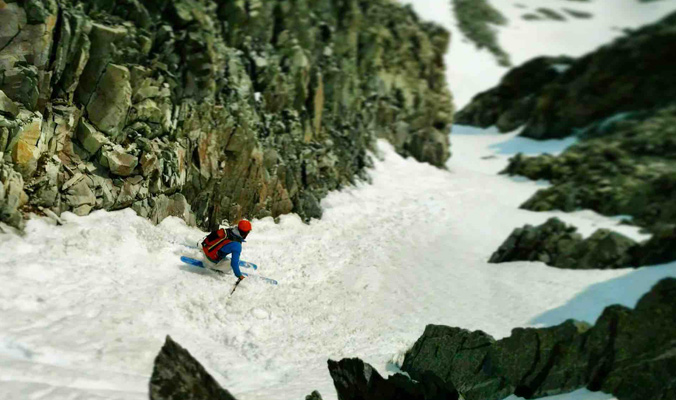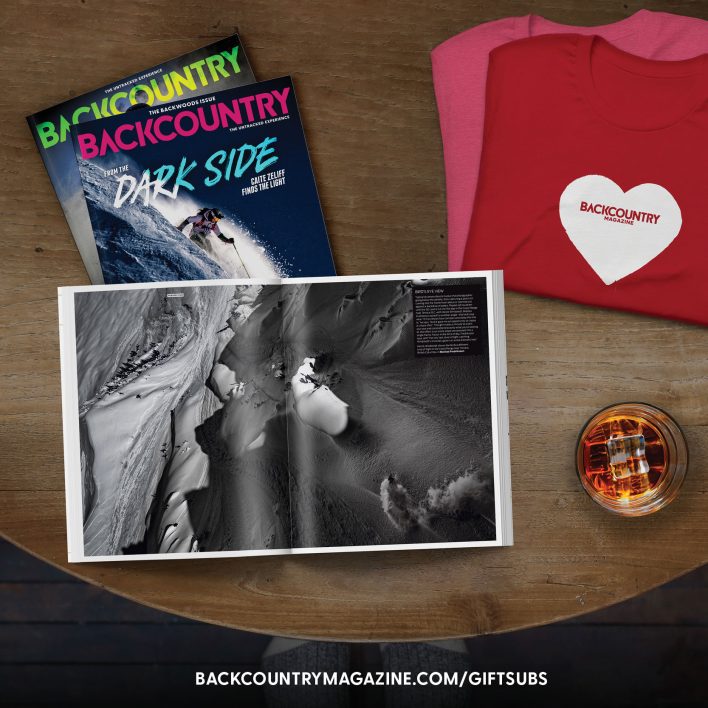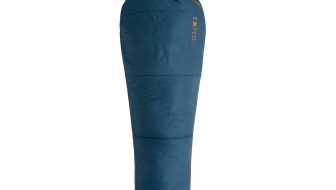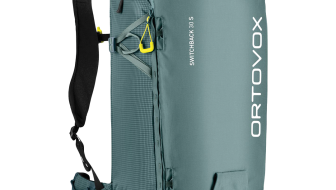Walking in ski boots on loose talus is not pleasant. The best comparison I’ve heard is that it’s like walking on a pile of dinner plates. Luckily, my boots are light, broken-in, comfortable and have rockered rubber soles. Still, I’m not sure I would even want to do this in hiking boots. And I especially don’t like it now that I’m on my seventh lap of the same 900-foot strip of snow. A few friends joined yesterday, but it’s Monday today and they’re all at work now. It’s hard to find people to join me everyday for 6-10 hours of skinning and skiing in late June, even in the spring-skiing capital that is Colorado.
![Just because it is summer in the mountains of Colorado doesn't mean Rice can stop skiing. [Photo] Aaron Rice](http://backcountrymagazine.com/wp-content/uploads/2016/07/Aaron_colo_embed_5.jpg)
Just because it is summer in the mountains of Colorado doesn’t mean Rice can stop skiing. [Photo] Aaron Rice
![Sometimes Rice's only company on his journey is the wildlife. [Photo] Aaron Rice](http://backcountrymagazine.com/wp-content/uploads/2016/07/Aaron_colo_embed_6.jpg)
Sometimes Rice’s only company on his journey is the wildlife. [Photo] Aaron Rice
The winter months weren’t bad. The Wasatch has some of the most driven backcountry skiers in the world and finding partners was easy nine out of 10 days. On that 10th day, I was happy to have some alone time and catch up on my podcasts. Early spring wasn’t too bad either, as I traveled and saw friends around the Rockies. I was spending a lot of that time skiing by myself as well, but I was enjoying the alone time and the skiing was good, for the most part.

Rice laps the corn in Colorado. [Photo] Courtesy Aaron Rice

The summer sun shines bright on the Rockies. [Photo] Courtesy Aaron Rice

Rice milks turns to reach his 2.5-million-vertical-foot goal for 2016. [Photo] Courtesy Aaron Rice
—
As Aaron Rice stacks up vertical all year long, he’ll be sharing his stories on backcountrymagazine.com under the tag and title 2Point5Mil. Find more about Rice at airandrice.com, through his Instagram feed, @airandrice, and on Snapchat at airandrice. You can also track his progress of monster touring days on Strava.










Related posts:
2Point5Mil: Broken, Not Beaten
2Point5Mil: Balance
Skintrack Sickness: Aaron Rice wades through the cold
Mountain Skills: The tools and tricks to stay motivated in the skintrack